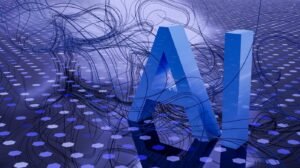When AI Lies
Artificial Intelligence (AI) has made huge advancements in recent years, revolutionizing various industries and enhancing our everyday lives. However, as AI becomes more sophisticated, there is a growing concern about its potential to deceive and spread misinformation. AI-generated content, deepfakes, and biased algorithms have raised ethical questions about the technology’s impact on society. In this article, we will explore the issue of AI lies and their implications.
Key Takeaways:
- AI has the capability to generate misleading or false information.
- Deepfakes, manipulated media created by AI, pose a significant threat to the credibility of visual content.
- Biased algorithms can perpetuate unfair or discriminatory practices if not properly supervised.
**The rise of AI has introduced new challenges in accurately distinguishing between real and AI-generated content**. Deepfakes, a specific type of AI technology, allow for the creation of realistic yet fabricated audio or video content by manipulating existing data. Deepfakes have the potential to spread misinformation, fuel conspiracy theories, and even defame individuals. With the advancement of AI, it has become increasingly difficult for humans to identify deepfakes, highlighting the need for improved detection methods and AI transparency. *As AI continues to advance, the authenticity of various forms of media becomes more uncertain and raises concerns about the erosion of trust*.
The Impact of Biased Algorithms
**Biased algorithms can perpetuate discrimination and reinforce societal inequalities**. AI algorithms are designed to make decisions based on patterns identified in data, but if the data used to train these algorithms is biased, the outcomes can reflect and amplify those biases. For example, predictive policing algorithms have been shown to disproportionately target certain minority groups. This bias can lead to unfair treatment and systemic discrimination. *Addressing algorithmic bias requires rigorous testing, diverse training data, and ongoing monitoring and adjustment to ensure fairness and inclusion*.
Awareness and Accountability
- Public awareness and education are crucial in recognizing and mitigating the dangers of AI lies.
- Governments and regulatory bodies play a significant role in enforcing guidelines and regulations to ensure responsible use of AI.
- Transparency and accountability from AI developers and companies are necessary for building trust in AI systems.
**Raising awareness and educating the public about AI lies is essential in preventing the spread of misinformation and promoting critical thinking**. People need to be informed about the capabilities and limitations of AI to avoid falling victim to deceptive content. Additionally, governments and regulatory bodies have a responsibility to establish guidelines and regulations to ensure the responsible development and use of AI technology. *Transparency and accountability from AI developers and companies are crucial to ensure the ethical deployment of AI and to rebuild public trust*.
Guarding Against AI Lies
**Efforts should be made to develop advanced detection mechanisms and verification tools to combat AI-generated lies**. Researchers and technology experts are actively working on improving detection methods to identify deepfakes and other AI-driven deception techniques. Additionally, collaborations between AI developers, journalists, and fact-checking organizations are essential in combating AI-generated misinformation. *By actively addressing the issue of AI lies, we can strive for a society that is better equipped to navigate the challenges and implications of advanced technologies*.
Data Breaches and Privacy Concerns
**AI’s ability to process and analyze vast amounts of data also raises concerns about data breaches and privacy**. As AI gains access to large amounts of personal information, there is a risk of unauthorized access and misuse of data. It is imperative for organizations and individuals to implement robust security measures to protect sensitive information and prioritize privacy. *Balancing the benefits of AI with privacy protection requires a robust framework of regulations and ethical practices*.
Conclusion
The rise of AI has brought numerous benefits and advancements, but it has also introduced ethical challenges and risks. **Recognizing and addressing AI lies, biased algorithms, privacy concerns, and data breaches are crucial for a responsible and ethically sound AI ecosystem**. Through public awareness, regulatory oversight, and continuous technological advancements, we can strive towards a future where AI is used responsibly, transparently, and for the greater good.
References:
- Smith, A. (2018). The ethical challenges of artificial intelligence. *Harvard Business Review*. Retrieved from [link]
- Jones, B., & Johnson, C. (2020). Deepfakes and the imperative of strategic response. *NATO Strategic Communications Centre of Excellence*. Retrieved from [link]
- Wachter, S., Mittelstadt, B., & Floridi, L. (2017). Transparent, explainable, and accountable AI for robotics. *Science Robotics*, 2(6), eaan6080.
| AI Lies | Deepfakes |
|---|---|
| Can generate misleading or false information. | Manipulated media created by AI. |
| Potential to spread misinformation. | Pose a threat to the credibility of visual content. |
| Raises concerns about trust and authenticity of media. | Increase difficulty in identifying fabricated content. |
| Impacts of Biased Algorithms | Awareness and Accountability |
|---|---|
| Perpetuate discrimination and reinforce inequalities. | Public awareness and education are crucial. |
| Predictive policing algorithms disproportionately target certain groups. | Governments and regulatory bodies enforce guidelines. |
| Require rigorous testing and diverse training data. | Transparency and accountability rebuild trust. |
| Guarding Against AI Lies | Data Breaches and Privacy Concerns |
|---|---|
| Develop advanced detection mechanisms and verification tools. | Risk of unauthorized access and misuse of data. |
| Collaboration between AI developers, journalists, and fact-checking organizations. | Organizations and individuals must prioritize privacy. |
| Addressing the challenge of AI-generated misinformation. | Implement robust security measures. |

Common Misconceptions
AI’s Intent to Deceive
One common misconception about AI is that it intentionally lies to mislead people. However, it is crucial to understand that AI systems do not possess intent or consciousness. They are programmed to process and analyze data to generate responses. Any misinformation or inaccuracies can be attributed to flaws in the algorithms or the input data.
- AI systems lack intentionality and consciousness.
- Misinformation can arise due to algorithmic flaws or inaccurate input data.
- The output of an AI system is based on trained models and statistical probabilities.
AI’s Ability to Understand Context
Another misconception is that AI is capable of comprehending and accurately interpreting contextual nuances like humans. While AI has made significant advancements in natural language processing, it struggles with understanding context as effectively as humans do. This limitation can result in misinterpretations or responses that may seem misleading or inaccurate.
- AI’s understanding of context is not as comprehensive as humans.
- Misinterpretations can occur due to context-related challenges.
- Improving contextual understanding is an active area of research in AI.
AI’s Omniscient Knowledge
Many people mistakenly believe that AI possesses unlimited knowledge and is infallible. However, AI systems are only as good as the data they are trained on and the algorithms they use. Since they are not capable of independent learning, they are bound by the quality and limitations of the input data. Thus, AI can make mistakes and provide incorrect information.
- AI systems do not possess infinite knowledge.
- Knowledge is limited to the data they have been trained on.
- Errors can occur due to the quality and limitations of input data.
AI’s Objective Interpretation
Some people assume that AI provides an impartial and objective interpretation of information. However, AI systems can exhibit biases present in the data they analyze, as well as the biases of their human creators. This can lead to biased outputs that perpetuate existing societal biases or misconceptions.
- AI systems are not immune to biases present in their data or creators.
- Biased outputs can perpetuate societal biases and misconceptions.
- Addressing and minimizing biases in AI is an ongoing challenge.
AI’s Human-like Understanding
It is a widespread misconception that AI possesses human-like understanding and reasoning abilities. Although AI can perform complex tasks and provide useful insights, it lacks the depth and breadth of human understanding. AI systems operate based on patterns and statistical correlations, without true comprehension or intuition.
- AI does not possess human-like understanding and reasoning capabilities.
- AI operates based on patterns and statistical correlations.
- Genuine comprehension and intuition are beyond AI’s capabilities.

AI Use Cases in Everyday Life
Artificial Intelligence (AI) has permeated various aspects of our lives, revolutionizing the way we work, interact, and make decisions. The following table showcases some interesting AI use cases in our daily lives:
| AI Use Case | Description |
|---|---|
| Recommendation Systems | AI-powered algorithms that suggest products, movies, or music based on individual preferences and browsing history. |
| Voice Assistants | Intelligent virtual assistants like Siri, Alexa, or Google Assistant that can perform tasks, answer questions, and provide information using voice commands. |
| Autonomous Vehicles | Vehicles equipped with AI to drive themselves, reducing human errors and promoting safer transportation. |
| Virtual Health Assistants | AI chatbots or applications that provide medical advice and services remotely, making healthcare more accessible and efficient. |
| Fraud Detection | AI algorithms used by financial institutions to detect and prevent fraudulent activities, protecting customers and saving money. |
| Smart Home Systems | AI-powered devices and systems that automate tasks, control appliances, and enhance security within homes. |
| Personalized Medicine | AI algorithms that analyze vast amounts of patient data to provide tailored treatment plans and improve healthcare outcomes. |
| Language Translation | AI technologies capable of translating languages in real-time, facilitating cross-cultural communication and global business. |
| E-commerce Chatbots | AI chatbots integrated into online shopping platforms, assisting customers in finding products and providing support. |
| Smart City Infrastructure | AI systems that optimize urban services, such as traffic management, waste management, and energy consumption. |
The Impact of AI on Job Markets
The rapid advancement of AI technology has generated concerns about its impact on job markets. The following table highlights various effects of AI on different industries:
| Industry | AI Impact |
|---|---|
| Manufacturing | Automation of repetitive tasks, leading to the replacement of certain job roles. |
| Transportation | Potential disruption caused by self-driving vehicles and autonomous logistics operations. |
| Retail | Integration of AI in customer service, inventory management, and checkout systems, resulting in changes to workforce requirements. |
| Finance | Streamlining of financial processes, such as trading, data analysis, and fraud detection, affecting job distribution and skill requirements. |
| Healthcare | Enhancement of diagnostics, treatment planning, and administrative tasks by AI, influencing healthcare personnel’s roles and responsibilities. |
| Education | AI-powered educational tools and personalized learning systems that augment teaching methods and change educators’ roles. |
| Customer Service | Utilization of AI chatbots and automated systems, impacting the demand for traditional customer service representatives. |
| Legal | AI-powered legal research and document analysis, altering the nature of certain legal tasks and the role of paralegals. |
| Journalism | Automated news generation and data-driven reporting, modifying the skill sets required in the journalism industry. |
| Hospitality | Implementation of AI in hotel services, reservations, and guest interactions, reshaping the roles of hospitality staff. |
The Ethical Dilemma of AI Decision-Making
The introduction of AI decision-making systems has raised ethical concerns regarding accountability and bias. The table below explores some key aspects of this ethical dilemma:
| Aspect | Description |
|---|---|
| Algorithmic Bias | Unintentional discrimination caused by biased training data that can lead to unfair decisions or reinforce biases in society. |
| Transparency | The challenge of understanding and explaining the decision-making process of complex AI models, potentially leading to lack of accountability. |
| Data Privacy | The protection of personal data collected by AI systems, ensuring compliance with privacy regulations and preventing misuse or breaches. |
| Human Oversight | Ensuring human involvement and judgement in critical decision-making processes where the consequences can have significant impact. |
| Job Displacement | The potential loss of jobs due to AI automation, necessitating considerations for retraining and job creation. |
| Security Risks | The vulnerabilities associated with AI systems that can be exploited by malicious actors, leading to fake data, fraud, or unauthorized access. |
| Morality and Ethics | The ethical challenges in AI decision-making, such as autonomous vehicles making life-or-death choices or AI-derived content influencing public opinion. |
| Accountability | Defining the responsibility and liability when AI systems make mistakes or cause harm, posing legal and ethical questions. |
The Role of AI in Cybersecurity
Artificial Intelligence plays a crucial role in combating sophisticated cybersecurity threats. The table below presents key applications of AI in cybersecurity:
| Application | Description |
|---|---|
| Threat Detection | AI algorithms analyze network traffic, log files, and user behavior patterns to identify and flag potential security threats. |
| Malware Detection | AI-powered systems can detect and classify malware based on behavior, signatures, and known attack patterns, aiding in rapid response and prevention. |
| Anomaly Detection | AI models establish baselines of normal behavior, enabling the identification of abnormal activities or deviations that may indicate attacks or breaches. |
| Automated Response | AI-driven systems can autonomously respond to security incidents, blocking suspicious IP addresses, quarantining files, or even shutting down compromised systems. |
| Security Analytics | AI helps in analyzing large volumes of security data and logs, correlating events, and identifying patterns that indicate potential risks or target areas. |
| User Authentication | Biometric authentication, voice recognition, and facial recognition systems utilize AI algorithms to validate user identities securely. |
| Security Testing | AI-assisted penetration testing and vulnerability scanning tools help assess system weaknesses and identify potential entry points for attacks. |
| Behavioral Analytics | AI algorithms monitor user behavior within systems, detecting anomalies that may indicate insider threats or unauthorized access attempts. |
The Evolution of AI Hardware
The field of AI has witnessed significant advancements in hardware development to support increasingly complex AI models. The following table showcases key advancements:
| Advancement | Description |
|---|---|
| GPUs for AI | Graphics Processing Units (GPUs) revolutionized AI training by offering parallel processing capabilities, accelerating deep learning model training. |
| AI-Optimized ASICs | Application-Specific Integrated Circuits (ASICs) designed specifically for AI tasks provide improved energy efficiency and performance. |
| Quantum Computing | Quantum computers have the potential to solve complex AI problems faster than classical computers, opening up new possibilities for AI research and algorithms. |
| Neuromorphic Chips | Chips inspired by the human brain architecture, designed to perform AI computations with greater efficiency by mimicking neural networks. |
| Edge AI Processors | AI processors designed specifically for edge computing devices, enabling AI tasks to be performed locally without relying on cloud infrastructure. |
| FPGAs for AI | Field Programmable Gate Arrays (FPGAs) offer flexibility in implementing AI models, allowing faster prototyping and customization compared to traditional CPUs. |
| Quantum Neural Networks | Quantum-inspired neural networks leverage quantum computing concepts to enhance machine learning algorithms and improve performance. |
| Optical Computing | Using light photons instead of traditional electronic circuits to perform AI computations, offering potential for faster processing and reduced power consumption. |
AI in Environmental Conservation
Artificial Intelligence plays a crucial role in addressing environmental challenges. The table below highlights some AI applications in environmental conservation:
| Application | Description |
|---|---|
| Environmental Monitoring | AI-powered systems analyze satellite imagery, sensor data, and citizen-contributed observations to monitor changes in ecosystems and detect environmental risks. |
| Wildlife Conservation | AI algorithms aid in animal identification, tracking, and behavior analysis, facilitating conservation efforts and anti-poaching activities. |
| Smart Agriculture | AI-based precision farming techniques optimize resource usage, monitor crop conditions, and predict yield, promoting sustainable agricultural practices. |
| Water Management | AI models assist in forecasting water availability, predicting water quality, and improving water usage efficiency, addressing water scarcity challenges. |
| Air Quality Control | AI systems analyze pollutant data, weather patterns, and emissions sources to predict and optimize air quality control measures for better public health. |
| Renewable Energy | AI algorithms aid in optimizing solar panel placement, wind turbine output, and energy grid management to maximize renewable energy generation. |
| Waste Management | AI-powered systems enhance waste sorting, recycling, and waste management infrastructure optimization, reducing environmental impact. |
| Climate Modeling | AI models process climate data and complex climate simulations, improving predictions about climate change impacts and enabling informed decision-making. |
AI in Art and Creativity
The integration of AI into artistic endeavors has opened up new avenues for creativity. The following table highlights key AI applications in the realm of art:
| Application | Description |
|---|---|
| Generative Art | Using AI algorithms to generate unique, computer-generated artwork that challenges traditional artistic boundaries. |
| Music Composition | AI models trained on vast musical datasets can compose original pieces of music or assist musicians in creating harmonious compositions. |
| Art Restoration | AI-assisted restoration techniques help preserve and repair damaged artworks, recreating missing parts or improving aging colors. |
| Image Style Transfer | AI algorithms analyze and transform photographs or images, adopting the style of famous artists, resulting in unique and visually appealing compositions. |
| Virtual Reality Art | AI technology combined with virtual reality platforms enables immersive art experiences and interactive virtual exhibitions. |
| AI-Generated Poetry | Natural Language Processing models generate poetic verses or assist poets in finding creative inspiration through intelligent suggestions. |
| Creative Writing | AI-powered writing assistants help authors, screenwriters, and storytellers in developing narratives, character creation, and idea generation. |
| Digital Sculpting | AI-driven software assists in digital sculpting and 3D modeling, enabling the creation of intricate and realistic virtual sculptures. |
The Future of AI in Healthcare
The potential of AI in transforming healthcare delivery and outcomes is immense. The following table explores some promising AI applications in the healthcare field:
| Application | Description |
|---|---|
| Medical Imaging Analysis | AI algorithms analyze medical images, aiding in the detection and diagnosis of diseases, reducing human error, and improving efficiency. |
| Drug Discovery | AI models assist in identifying potential drug candidates, optimizing molecule design, and accelerating the drug discovery process. |
| Predictive Analytics | Utilizing AI to analyze patient data, genetic factors, and medical records, predicting disease risks and optimizing treatment plans. |
| Robot-Assisted Surgery | AI-enabled surgical robots improve precision, enhance surgery outcomes, and enable minimally invasive procedures. |
| Remote Patient Monitoring | AI-based systems track patient health data, detect abnormalities, and alert healthcare professionals for timely interventions and remote care. |
| Health Records Management | AI algorithms organize, classify, and extract relevant information from electronic health records, enabling faster retrieval and comprehensive analysis. |
| Genomic Analysis | AI analyzes genome sequences, identifying genetic variations or mutations associated with diseases, improving personalized medicine approaches. |
| Virtual Assistants for Doctors | AI-powered assistants help doctors in clinical decision-making, providing evidence-based recommendations and treatment guidelines. |
Implications of AI on Privacy
The integration of AI into various sectors raises concerns regarding personal privacy. The table below showcases privacy implications related to AI adoption:
| Implication | Description |
|---|---|
| Data Collection | AI systems often rely on vast amounts of personal data, leading to concerns about the extent of data collection and potential misuse. |
| Surveillance | AI-powered surveillance systems, such as facial recognition or behavior tracking, can infringe on individuals’ privacy rights if not appropriately regulated. |
| Biometric Data | Using biometric indicators like fingerprints or facial features in AI systems raises concerns about the security and privacy of individuals’ biometric data. |
| Targeted Advertising | AI algorithms analyze personal preferences and online behavior, enabling hyper-targeted advertising, posing challenges to privacy and manipulation. |
| Personalized Services | AI systems customize services based on user data, raising concerns about the amount of personal information shared and potential for data exploitation. |
Frequently Asked Questions
When AI Lies
What is AI?
What is meant by AI lying?
Why would AI lie?
What are the potential consequences of AI lying?
How can AI lies be detected?
Can AI be programmed not to lie?
Who is responsible when AI lies?
What are the efforts to prevent AI lying?
Can AI be taught not to lie?
What should users do if they suspect AI lies?




